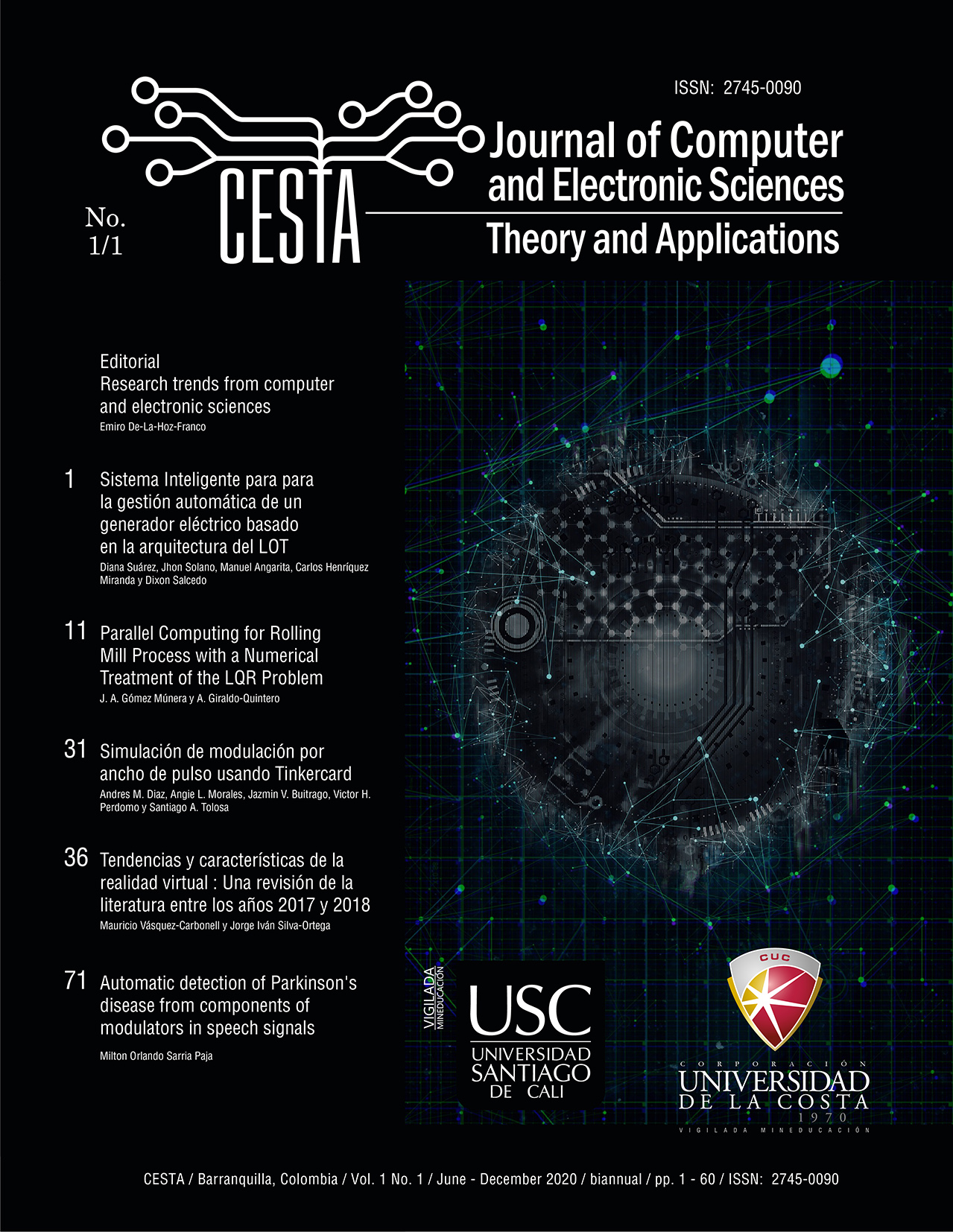Automatic detection of Parkinson's disease from components of modulators in speech signals
DOI:
https://doi.org/10.17981/cesta.01.01.2020.05Keywords:
Espectro de modulación; Enfermedad de Parkinson; señales de voz; reconocimiento de patrones; características de covarianza.Abstract
Parkinson's disease (PD) is the second most common neurodegenerative disorder after Alzheimer's disease. This disorder mainly affects older adults at a rate of about 2%, and about 89% of people diagnosed with PD also develop speech disorders. This has led scientific community to research information embedded in speech signal from Parkinson's patients, which has allowed not only a diagnosis of the pathology but also a follow-up of its evolution. In recent years, a large number of studies have focused on the automatic detection of pathologies related to the voice, in order to make objective evaluations of the voice in a non-invasive manner. In cases where the pathology primarily affects the vibratory patterns of vocal folds such as Parkinson's, the analyses typically performed are sustained over vowel pronunciations. In this article, it is proposed to use information from slow and rapid variations in speech signals, also known as modulating components, combined with an effective dimensionality reduction reduction approach that will be used as input to the classification system. The proposed approach achieves classification rates higher than 88%, surpassing the classical approach based on mel cepstrals coefficients (MFCC). The results show that the information extracted from slow varying components is highly discriminative for the task at hand, and could support assisted diagnosis systems for PD.
Downloads
Published
How to Cite
Issue
Section
License
Los artículos publicados son de exclusiva responsabilidad de sus autores y no reflejan necesariamente las opiniones del comité editorial.
La Revista CESTA respeta los derechos morales de sus autores, los cuales ceden al comité editorial los derechos patrimoniales del material publicado. A su vez, los autores informan que el presente trabajo es inédito y no ha sido publicado anteriormente.
Todos los artículos están bajo una Licencia Creative Commons Atribución-NoComercial-SinDerivadas 4.0 Internacional.



 English
English
 Español (España)
Español (España)






